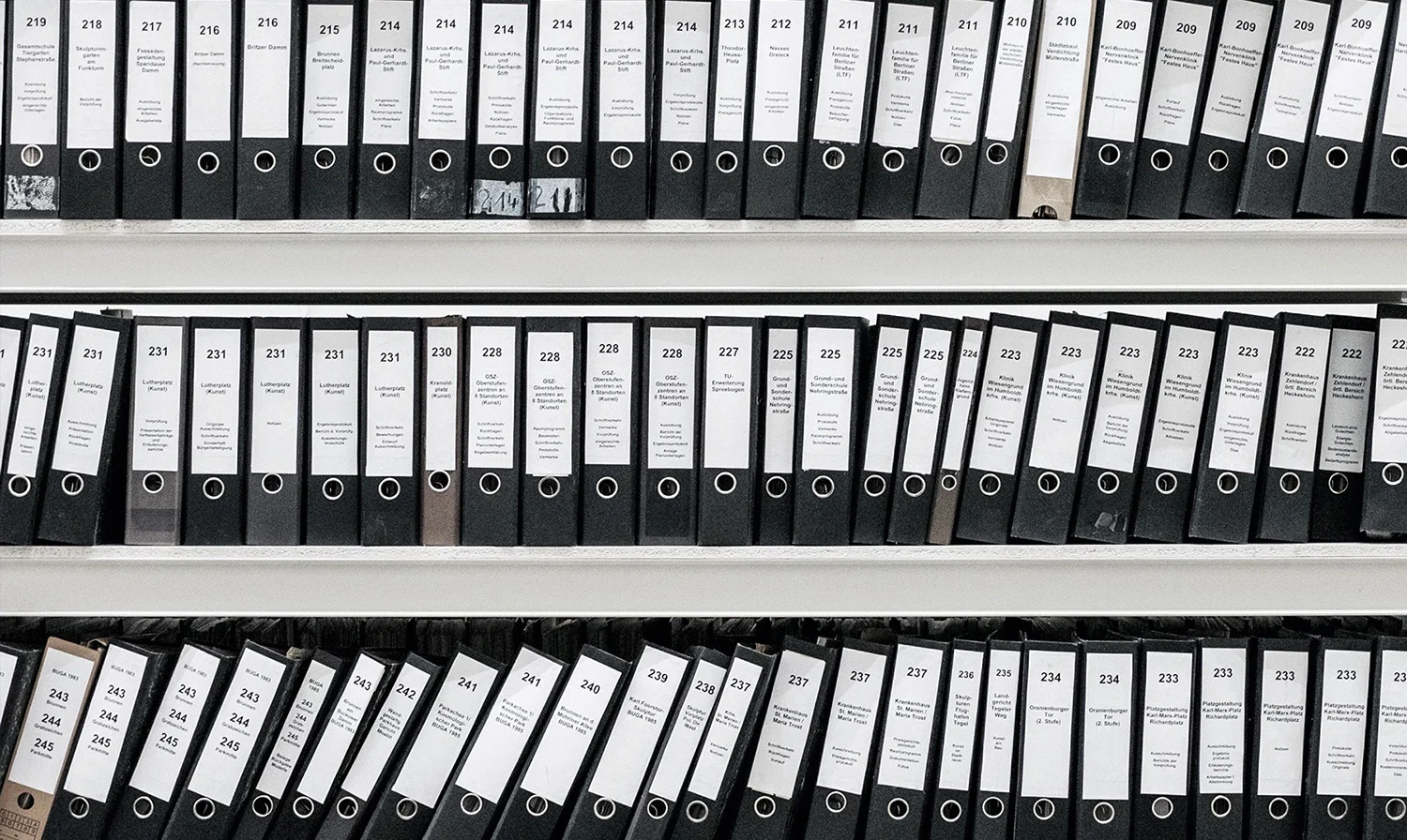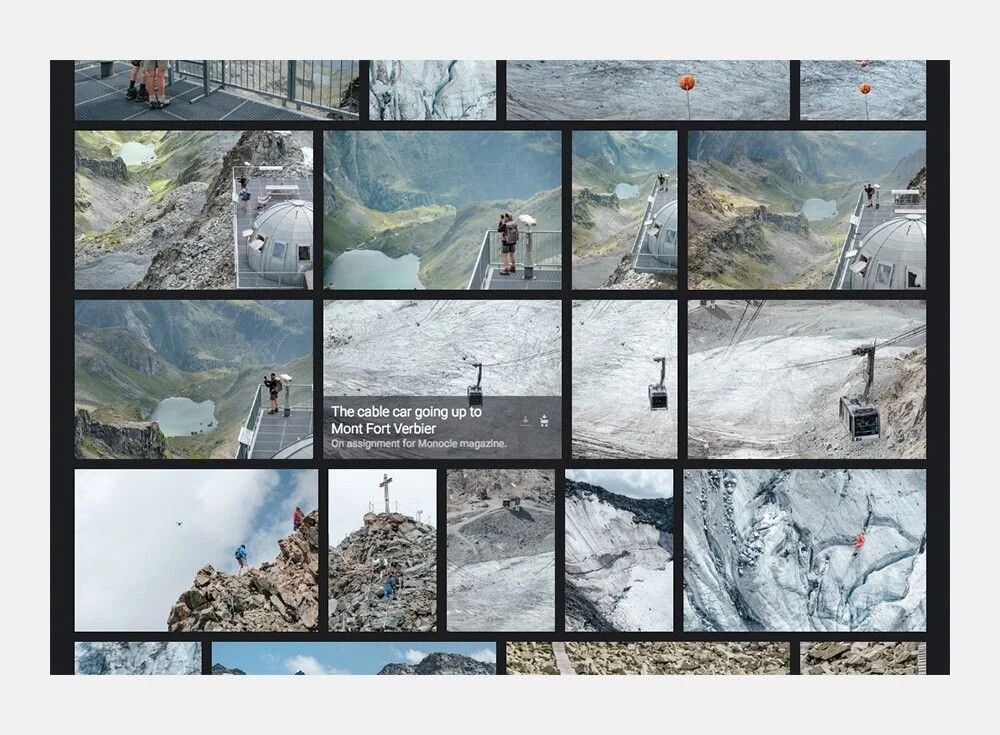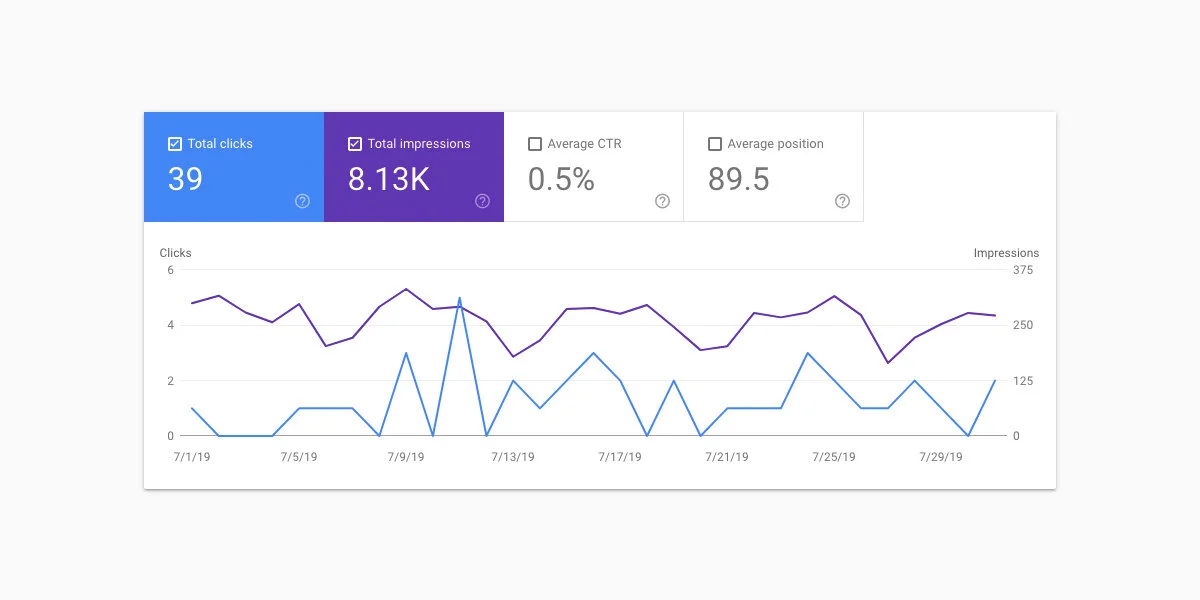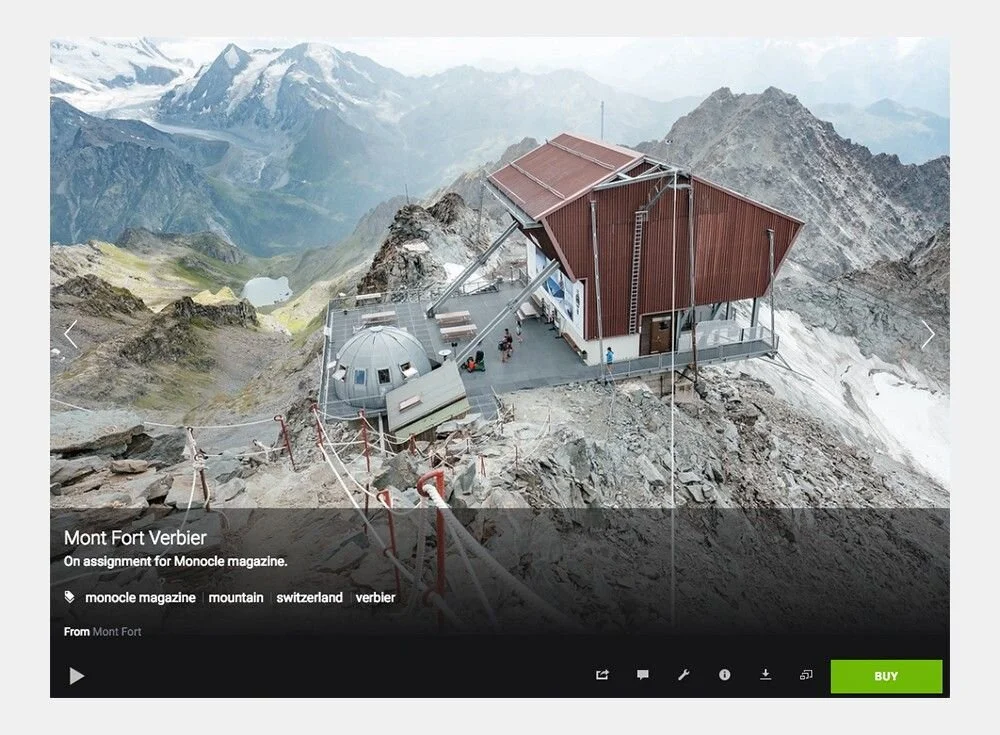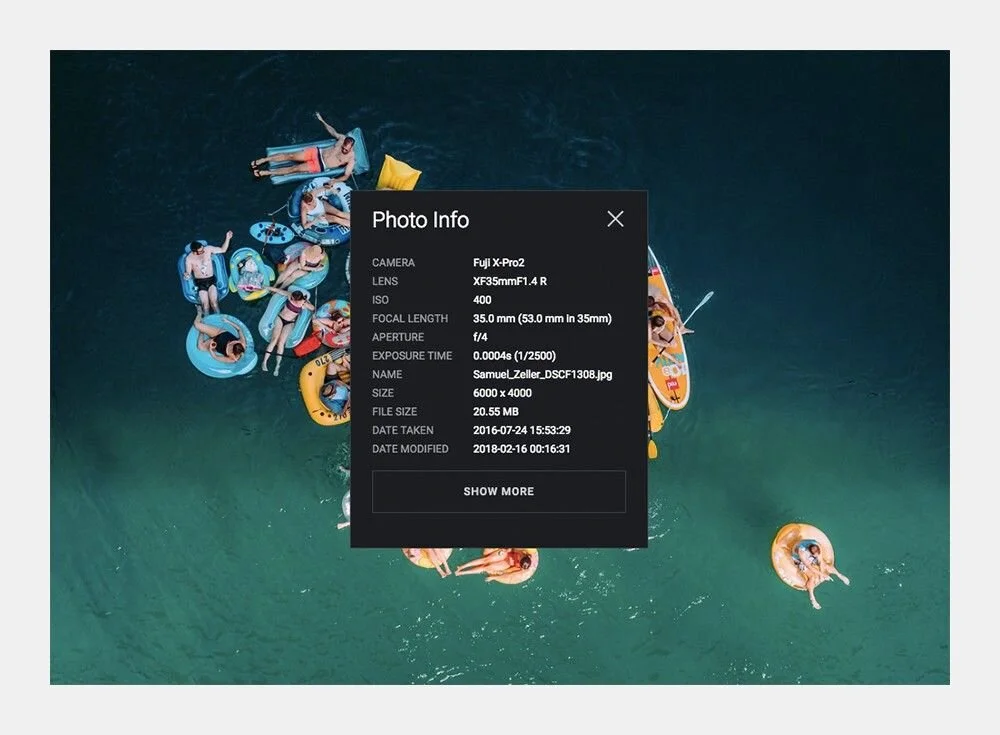Ten good reasons why you need an archive if you’re a photographer
Did you ever had a moment in your life where a friend, co-worker or client comes to you and ask you for a specific image and you just can't find the original? If you're like me with multiple Lightroom catalogs (now replaced with Lightroom CC) containing ten thousands of photographs then this situation will likely happen.
With digital photography it’s now effortless to take, process and publish images. We share more than ever before on social media and we shoot twice as much than five years ago in 2013.
All that data is easy to generate and it’s quite common for photographers to share their resulting images every single day online. But there’s one thing that still require some effort and consistency, something that many photographers overlook. And that’s archiving.
What’s an archive
The word itself comes from the Latin “archïum” itself derived from Greek “archeion” which mean “public records”. It’s basically an accumulation of records (in this case, photographs).
In a way, Lightroom catalogs are already archives.
So the real question would be: what’s a good archive.
The basics of a photography archive
A good archive is an organized repository, it can be filtered (by location, keywords, tags, categories, date etc…), you can make search requests on it, it has to be backed up and secure, ideally you’d also need to be able to let other people browse it, it should be accessible regardless of your device and your location (web based). Most importantly, it should be easy to maintain and use.
As a photographer, amateur or pro, you’re producing content and this content has a value. It can be an emotional value or a financial one (or sometimes both). It makes sense to protect that value, first by having a proper backup system in place, and secondly by archiving and organizing it.
Creating your archive
I’ve tried a bunch of different pieces of software during the past few years, from apps (Filemaker, Evernote, Pixa) to web based solutions (Dropbox, Google photos, EyeEm, Behance, Pixieset, Shootproof) but none of them had the set of features I needed.
Until I finally tried SmugMug.
I had seen SmugMug being used so many times already (for example on Von Wong website) but never bothered to actually test it.
The American company started by Chris and Don MacAskill went from a five-bedroom home with blow dryers and vacuums routinely blewing circuit breakers in 2002 to buying the giant Flickr in 2018. Those guys are passionate about photography and it shows.
Let’s see why it’s so good to use SmugMug as an archive (this isn’t a sponsored post by the way, I’m just a happy user).
It’s complementary to your portfolio
As a photographer your website is a showcase, it should display your best work and contain a selection of projects. A good friend of mine who’s also a great photographer (Niels Ackermann) once explained me that I was showing too much on my portfolio and he was right. I was starting out and wanted to show too many images per project because I just couldn’t edit them down to a tight selection.
A portfolio is the curated version of your best self. It’s the beautiful display of cakes and sweets by the pastry shop window.
The “commissioned” section of my portfolio showing eight selected client projects.
My portfolio is made on Squarespace and is located at samuelzeller.ch
My archive is set-up on a sub-domain located at archive.samuelzeller.ch
There’s a link between my portfolio and my archive, they’re complementary.
Most visitors just want to discover an overview of my work, they land on my portfolio and get an idea of what type of photography I’m doing. Some other visitors (friends or clients) are looking for more and they can access my archive, my blog and my social media for this purpose.
Showing all the images taken during a project, note the alternative crops and angles.
It’s organized and searchable
A portfolio can be as simple as a few slideshows. Some great photographers that I’m following have very minimal websites. The structure is often similar to this one “overview, portraits, commercial, about, contact”.
There’s also photographers who choose to display their work per project and with a bit more details, each project usually containing between ten and thirty images (that’s what I’m doing on my website).
A portfolio often has a very linear organization, it’s mostly a main navigation and a simple structure. Your archive is much smarter than that, it can be filtered and it’s searchable. Think of it as an extension of your website.
My archive is divided by locations (countries and/or cities) but also by projects. For example at the first level I have a folder for “Geneva” which itself contains sub-folders, this allows me to quickly find all the images that I’ve shot in this city.
At the first level I also have folders for client’s projects, for example “Verbier - Monocle magazine” contains about 100 images that I’ve shot in Verbier for Monocle magazine. They printed only a few of them but I’ve archived the project (not all the images, just the 100 photographs that I selected from that day and sent to the client).
SmugMug has powerful tools to organize your archive. For example you can batch edit titles, tags and descriptions.
Most images are also organized using titles, descriptions and tags.
This allows me or visitors to filter the entire archive either by searching for a specific word or by clicking on one of the tags. Tags are also conditional. You can display all images containing “snow” that are in the folder “Geneva” for example. Tags can also be combined, for example you can display all images tagged with “architecture” then filter down the results to only show the images tagged with “winter” to view all the buildings I’ve shot during that time of the year.
Images under the tag “mountain” note the display of related keywords and the option to combine them.
It’s visible to the public and to search engines
Every single day people search for images and most of them do that using Google. Having your work showing up in search results is an easy way to increase the number of people who will visit your website. But getting your work properly indexed is not as easy as it seems.
Luckily SmugMug has a great SEO. Every images have title, description and tags attributes and they’re seen as structured data (they’re Schema ImageObject) which means they’ll show up quickly in Google search results.
Stats of the archive for July 2019, this shows only the numbers for Google images search (not web search).
The more images you have on your archive the more often your work will appear in search. My archive now contains more than 10’000 image, it displays in Google image results about 70 times per day for various type of queries. It may not seems much but organic discoverability can play a bit part on the long run in getting new clients and your name out there.
My photographs appearing in Google search image results just a few weeks after adding them to the archive.
It act as a backup
Uploading your full resolution JPEG files to an archive on the cloud also mean they’re relatively safely stored from any hazard. It doesn’t replace a full backup of your work on an external RAID drive and on services like Backblaze (highly recommended, currently using a Synology DS418 NAS backuped on Backblaze B2 for all my raw files, edit: I’m now storing all my raw files on Lightroom CC cloud storage instead) but it adds another layer of security. Photographs are our assets and we should protect them.
Note: SmugMug also has a Lightroom plugin that let you sync collections (it pulls titles, captions and tags from Lightroom too!). It is useful if you have a lot of images to upload and want to stay in Lightroom for organizing them.
You can access it anywhere
That’s probably one of the most useful feature of having an archive online. Being able to share your work to friends, family or clients on the go is invaluable.
As an example, one day I was taking photographs for Monocle who opened a new office and cafe in Zürich and at some point I had to take pictures of the drinks they were serving. I took my phone and showed them some other similar shots I’ve did on past projects (that are not on my portfolio) and we decided together on the styling.
The SmugMug iOS app running on my iPhone SE.
Not only you can share publicly visible galleries, folders and sub-folders but you can also create private ones (accessible only with a link) or password protected ones.
It gives context to your work
Photography is a great tool for documentation, but single images often don’t have a narrative. Visitors won’t know that this beautiful forest you captured is actually part of one of the sixty national parks in the US, they won’t understand the context unless it’s clearly defined.
“I know so many photo editors and art directors who constantly bemoan the lack of captions on websites to help them understand the context in which an image has been created. So why not include them? I have yet to hear a logical answer to this question”
SmugMug showing title, captions and tags for an image, providing context to the viewer.
By using the title and description fields in SmugMug (and the tags) you can easily give the viewers more information about your work.
It will be useful to clients and friends
I can’t recall the number of times I was with a friend and took my iPhone out of my pocket and showed them some work I’ve did that I had stored on my archive. It’s invaluable to have all your work in the palm of your hand.
When I’m shooting corporate or commercial portraits I also show my archive as a reference for the client. I can quickly find past shots that encompass what I want to create on location.
The bigger your archive becomes the more likely you’ll have images that will fit your future clients in both content and style. I learned quite quickly that most clients need to see something similar to their needs in your portfolio in order to be able to project themselves and imagine what you’ll be able to create for them.
For example it’s way easier for me to pitch a project for a wine brand if I can show them an archive of images I’ve shot in the past revolving around winemaking.
It looks professional
Maybe this is a detail but clients will appreciate when you send them a link to your archive instead of just a bunch of images on WeTransfer. They’ll be able to browse sharp images that have been automatically optimized for the web by SmugMug and download or buy the ones they need. You can even create password protected galleries and let them share the link to their colleagues and their team.
SmugMug offers plenty of customization options to make your archive look exactly the way you want it to be.
It’s built for tomorrow
As a photographer I’m my own boss and every project I do (personal or for a client) is another stone I add to the house I’m building. It is very important to take the time to sort old projects and present them online, but I don’t want to put everything on my portfolio. Your archive grow with you, it’s there for the long term.
It act as a journal
Having an archive is a good way to build up a journal for yourself. Because every images have their EXIF data displayed you can quickly check when you took that one shot, which equipment you used and what were the settings of your camera. You can also use this to browse back in time and see what you were doing a year ago. Your archive is a repository for your memories.
An image taken on July 2th with my favorite combo, a Fujifilm X-Pro2 with the XF35mm F1.4 lens.
Note that this article is not endorsed nor sponsored by SmugMug, it is purely my personal opinion on their services and why I chose them to build my archive.
Before choosing SmugMug I compared it with other services, mainly Photoshelter, Pixieset and Shootproof (I’ve used the last two). One of the big reason why I went with SmugMug is also because of the cost. At just 86$ per year for their “power” plan (custom domain, unlimited storage and customizations) it’s hard to beat!
If you have any questions or opinions on the subject feel free to use the comments below, I’ll answer you as soon as possible.
